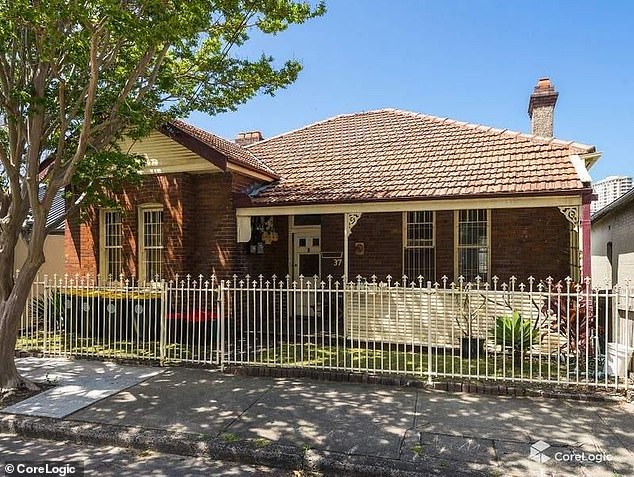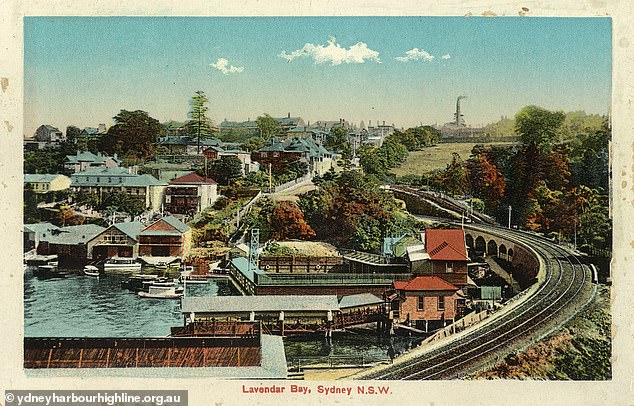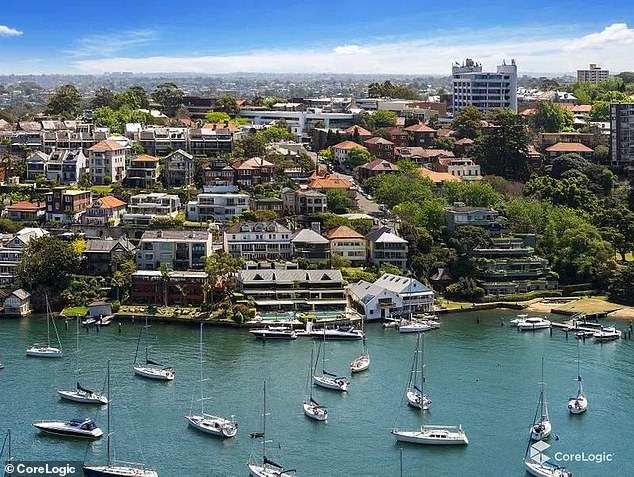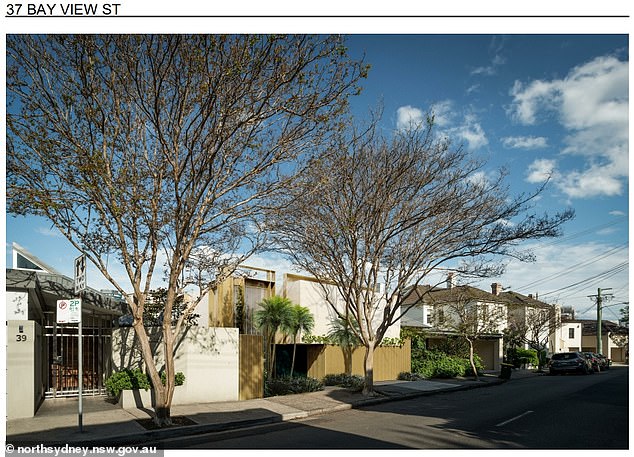Lavender Bay, Sydney: Australians divided over plans to demolish Federation home
The planned demolition of a 115-year-old house in an exclusive area of Sydney has sparked fierce debate – even though locals say it is by far the ‘biggest’ house on the block.
Some history buffs argue Baaizichtstraat 37 at Lavender Bay, on Sydney’s Lower North Shore, should be protected as an example of Federation-era architecture – while others say these early 20th century houses are a dime a dozen.
The four-bedroom property is not listed, meaning there is nothing to protect it from demolition and replacement with a modern glass home that can be resold for millions.
Construction plans submitted to the municipality show the architect’s distinctly 21st century vision of the house, in line with comparable developments at the port.
Although the date of construction is unclear, the original brick home was first photographed in 1908 and is considered emblematic of the Federation style.
The average house price for the harborside suburb, just 3km north of the CBD, is $4,912,500, and the average unit price is $1,550,000.
News of the development was revealed through the popular Instagram account Sydney explainedthat documents the architectural history and peculiarities of the city.
A 115-year-old house (circled in photo) in Sydney’s exclusive suburb of Lavender Bay is being demolished

News of the demolition sparked a heated debate online about the meaning of the house
“This harborside house, built around 1908 in Lavender Bay, has been captured before disappearing forever and is about to be demolished,” the post said.
The post states that the house is not listed or in a conservation area, and that ‘nothing can save the 115-year-old house which will be replaced by a modern (mostly glass) home’.
Many social media users were shocked by the news, calling the loss of the building “sad” and “a great shame.”
“I hate the way the real Sydney is being heralded,” said one.
‘Too bad they [aren’t] keep the front and then just renovate the back. You could do a lot there and still retain a bit of history,” said another.
‘It’s the texture of the streetscape and the history (and some beautiful old houses) that have been lost. Too bad,” said another.
However, others were unfazed by plans to demolish the house, with one describing the property as ‘nothing special’.
Another said: ‘It seems like a fairly standard issue to me, a federation house. Sydney has had enough, personally I won’t lose much sleep over this.’
One resident commented: ‘It’s the dirtiest house on the street at the moment.
‘There is almost nothing as beautiful to the eye as an entire street full of federation houses that blend harmoniously into each other… but this is not one of them.’
Some wondered why Sydney Exploreed even put “random ugly house” on its Instagram feed, which is usually reserved for more notable structures.

Although the date of construction is unclear, the original brick home (circled here) was first photographed in 1908 and is considered emblematic of the Federation style

The house was featured in this 1920 postcard

The average house price for the Lavender Bay harbor district, just 3km north of the CBD, is $4,912,500, and the average unit price is $1,550,000.

The plans submitted to the municipality show the architect’s distinctly 21st century vision of the house. (Pictured: an artist’s impression of the completed development)
SydneyExplained posted images of the house in its current state, as well as an old black and white photo of the neighborhood and a postcard showing the 1920s property.
“The house is a brick dwelling from the Federation period with a hipped tiled roof,” the caption reads.
“It presents itself as one floor on Bay View Street and three floors on Lavender Bay.”
The building has not always been a conventional residential home: it was converted into residential flats in the 1930s and only recently converted into a residential home again.only home.
A Federation House refers to the style of residential architecture popular in Australia during the Federation period (1901–1914), which coincided with the establishment of the Commonwealth of Australia.
The style is associated with a period of national confidence and optimism, and is known for its charm, craftsmanship, distinctive design and historical significance.
